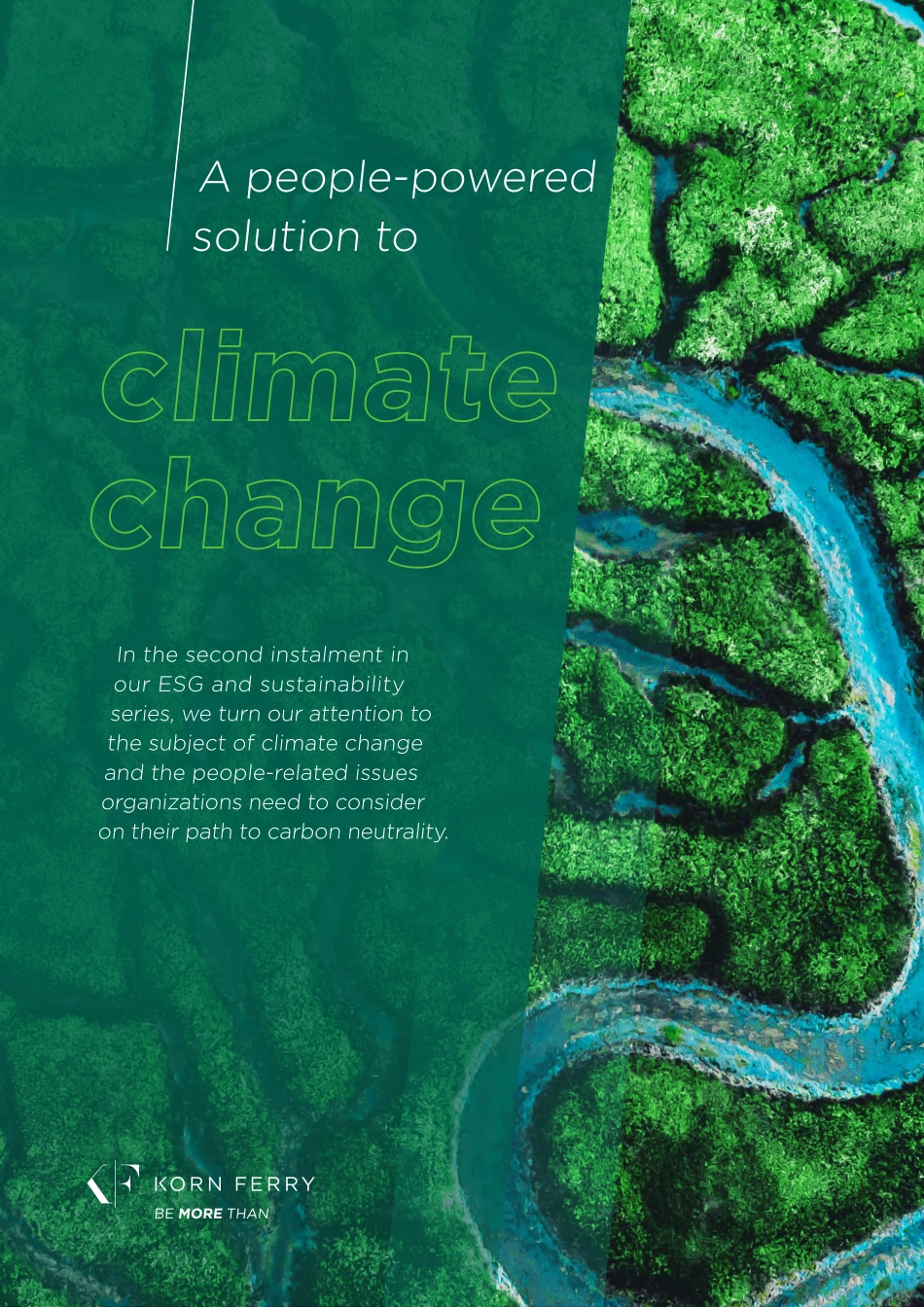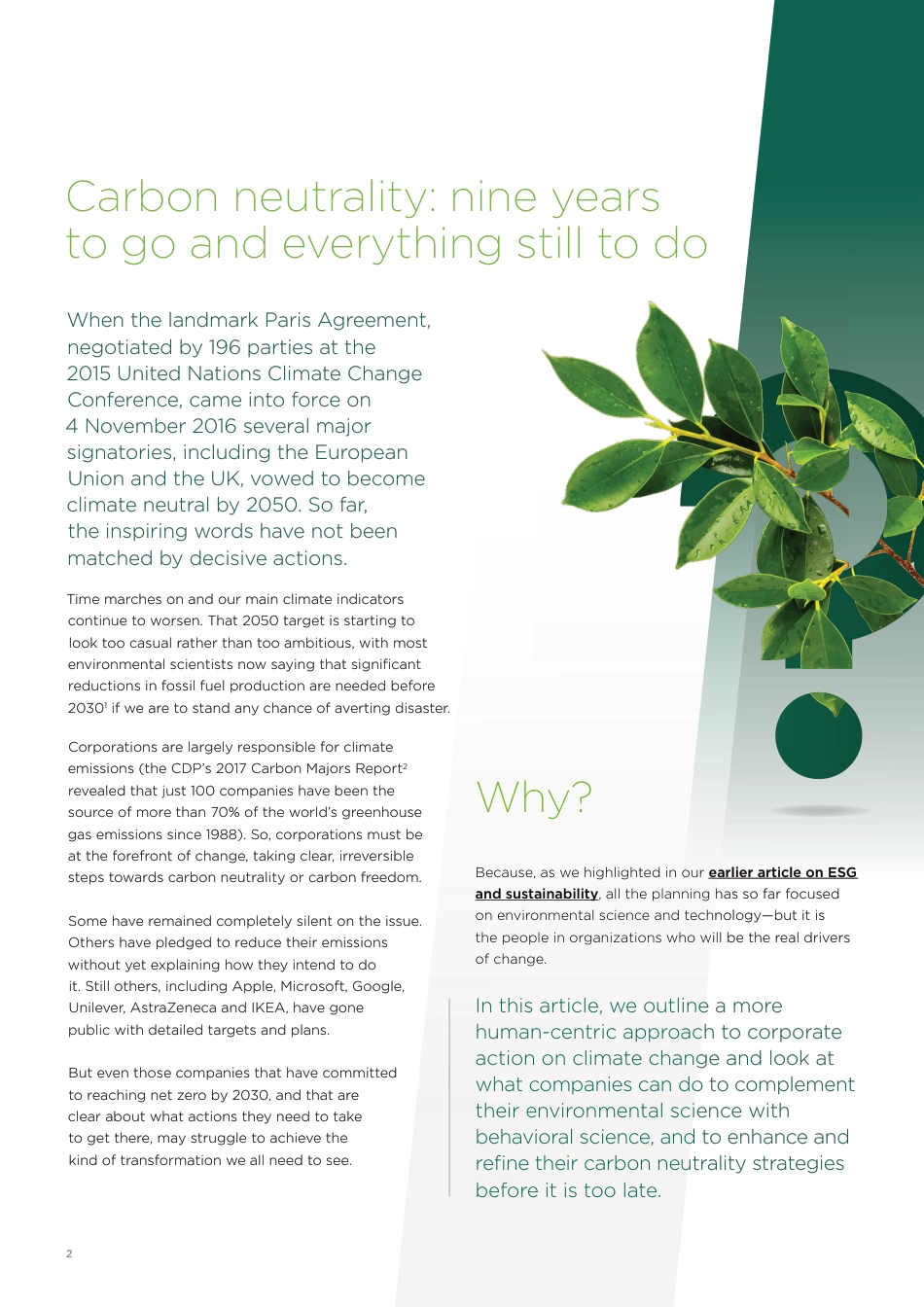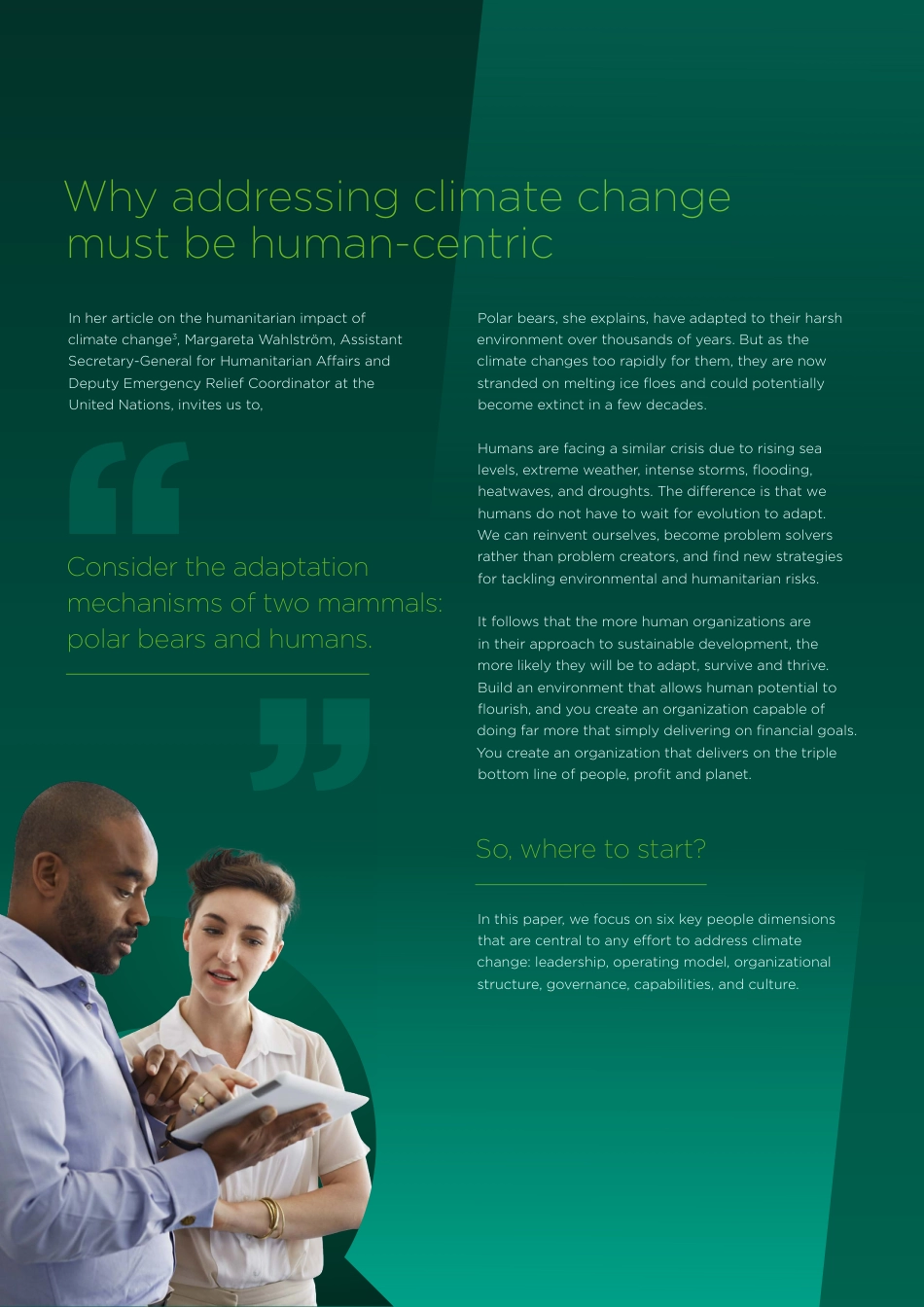In the second instalment in our ESG and sustainability series, we turn our attention to the subject of climate change and the people‑related issues organizations need to consider on their path to carbon neutrality. A people‑powered solution to climatechange2Carbon neutrality: nine years to go and everything still to doWhen the landmark Paris Agreement, negotiated by 196 parties at the 2015 United Nations Climate Change Conference, came into force on 4 November 2016 several major signatories, including the European Union and the UK, vowed to become climate neutral by 2050. So far, the inspiring words have not been matched by decisive actions. Time marches on and our main climate indicators continue to worsen. That 2050 target is starting to look too casual rather than too ambitious, with most environmental scientists now saying that significant reductions in fossil fuel production are needed before 20301 if we are to stand any chance of averting disaster.Corporations are largely responsible for climate emissions (the CDP’s 2017 Carbon Majors Report2 revealed that just 100 companies have been the source of more than 70% of the world’s greenhouse gas emissions since 1988). So, corporations must be at the forefront of change, taking clear, irreversible steps towards carbon neutrality or carbon freedom.Some have remained completely silent on the issue. Others have pledged to reduce their emissions without yet explaining how they intend to do it. Still others, including Apple, Microsoft, Google, Unilever, AstraZeneca and IKEA, have gone public with detailed targets and plans. But even those companies that have committed to reaching net zero by 2030, and that are clear about what actions they need to ta...



